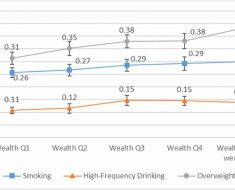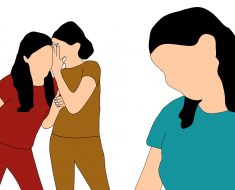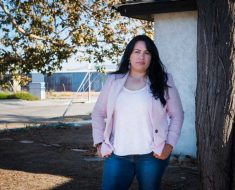The rapid outbreak of the novel coronavirus, namely, severe acute respiratory syndrome coronavirus-2 (SARS-CoV-2), the causal agent of the ongoing coronavirus disease 2019 (COVID-19) pandemic, has claimed more than 6.24 million lives worldwide. Scientists have worked extensively to develop effective vaccines, several of which have received emergency use authorization (EUA) from global regulatory bodies. Subsequently, vaccination programs have been initiated in many countries around the world.

Background
According to a survey conducted between February and March 2021, a high level of vaccine hesitancy, i.e., 40–47% of American adults, was observed. However, it is important that around 60–70% of the population be immunized with a COVID-19 vaccine to achieve herd immunity. Several studies have indicated the uneven distribution of vaccinated and unvaccinated clusters. In June 2021, an increased number of COVID-19 cases were observed in the poorly vaccinated US states due to the emergence of the SARS-CoV-2 Delta variant. Scientists stated that these breakouts would prolong the pandemic for a longer period.
Researchers have reported COVID-19 vaccine hesitancy, which includes individuals reluctant to be vaccinated and causing a delay in immunization and those who refuse to be vaccinated. Interestingly, in the USA, the highest rate of vaccine hesitancy was found among African Americans, conservatives, and women. Scientists identified factors linked to COVID-19 vaccine hesitancy, such as education, employment, and income.
Several studies have also shown that spreading vaccine misinformation on social media could have driven the negative opinion about the COVID-19 vaccine. Some of the misinformation that circulated included an incorrect report that vaccines could genetically modify the population and contain microchips linked to the 5G network. Scientists have expressed the importance of understanding how false information about the COVID-19 vaccine has impacted vaccine uptake rates.
A new study
A new study published in Scientific Reports has determined the link between vaccine hesitancy, vaccination rates, and online misinformation across the US. The authors of this study obtained relevant data from Facebook, Twitter, and the Centers for Disease Control and Prevention (CDC). Scientists used Granger Causality analysis to determine the directional connection between online misinformation and vaccine hesitancy.
The current study provided reasons why some of the geographical regions exhibited decreased COVID-19 vaccination rates. Researchers pointed out that one of the main reasons for vaccine hesitancy is online misinformation. They considered variability across US regions with high and low levels of misinformation and reported that around 20% of depletion in vaccination rate between states and 67% of the increase in vaccine hesitancy across Democratic counties were associated with the prevalence of misinformation.
In the light of this finding, there is a high possibility of the prevalence of the SARS-CoV-2 epidemic in many regions of the US. There is an urgent need to counter misinformation to enhance the rate of COVID-19 vaccination. Scientists stated that there is a high possibility that vaccine-hesitant individuals are prone to spreading misinformation. As vaccine hesitancy and misinformation are publicly governed, it is important to understand its ecological and individual relationships. The authors of this study failed to rule out confounding factors; therefore, uncertainties about casual links remain, and these should be addressed in future studies.
Scientists stated that public opinion is sensitive to the information ecosystem, and, in modern times, a variety of information tends to spread rapidly. This study indicated that although social media users do not represent the general public, they play an important role in vaccine hesitancy via the lateral flow of misinformation. Scientists analyzed group-level effects and found that the findings were true for two geographical scales.
Limitations
The authors of this study indicated several limitations that include not estimating the exposure to social media and also the fact that conclusions are based on data averaged over geographical regions. Additionally, researchers believe that their source-based approach to determine false information at scale might not have included all misleading and incorrect information related to COVID-19 vaccines. They might have also included some low-credibility sources in this study. Another limitation of this study is its short study period. Researchers also stated that other factors might influence vaccine hesitancy levels, including availability and accessibility to COVID-19 vaccines, death rates, and appropriate documents about vaccine safety.
Conclusion
The current study revealed a correlation between the information ecosystem that contains false claims about COVID-19 vaccines and vaccine uptake based on geographical regions. This study emphasized the importance of valid information that could benefit the public immensely.
- Pierri, F. et al. (2022) "Online misinformation is linked to early COVID-19 vaccination hesitancy and refusal", Scientific Reports, 12(1). doi: 10.1038/s41598-022-10070-w. https://www.nature.com/articles/s41598-022-10070-w
Posted in: Medical Science News | Medical Research News | Disease/Infection News
Tags: Coronavirus, Coronavirus Disease COVID-19, covid-19, Education, immunity, Immunization, Pandemic, Respiratory, SARS, SARS-CoV-2, Severe Acute Respiratory, Severe Acute Respiratory Syndrome, Syndrome, Vaccine

Written by
Dr. Priyom Bose
Priyom holds a Ph.D. in Plant Biology and Biotechnology from the University of Madras, India. She is an active researcher and an experienced science writer. Priyom has also co-authored several original research articles that have been published in reputed peer-reviewed journals. She is also an avid reader and an amateur photographer.
Source: Read Full Article





